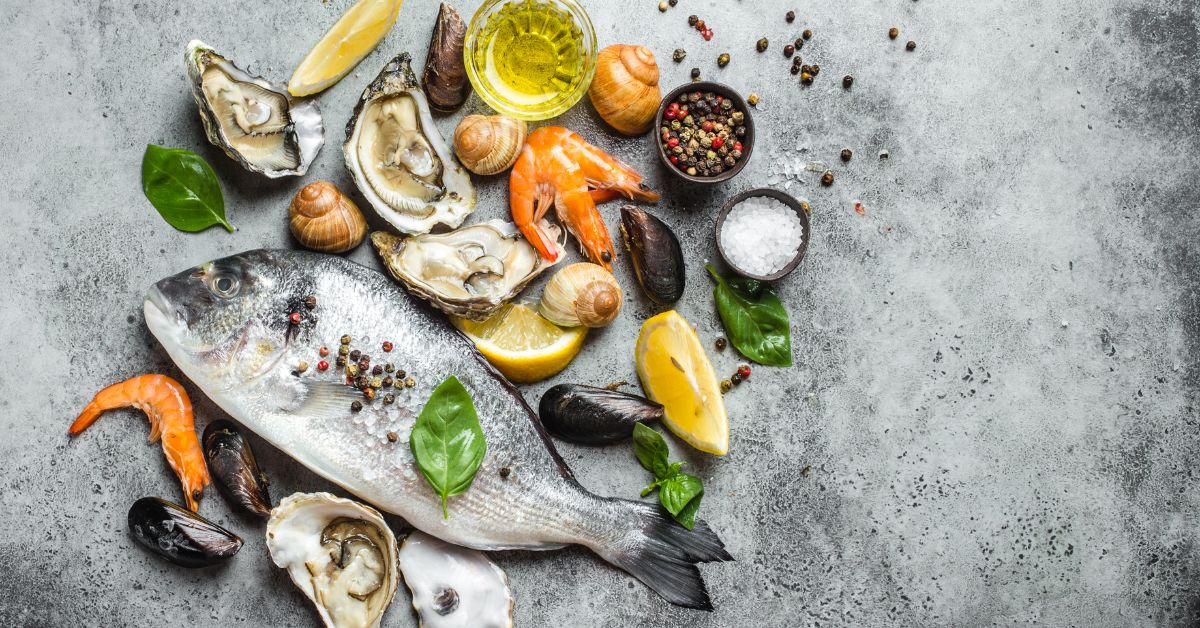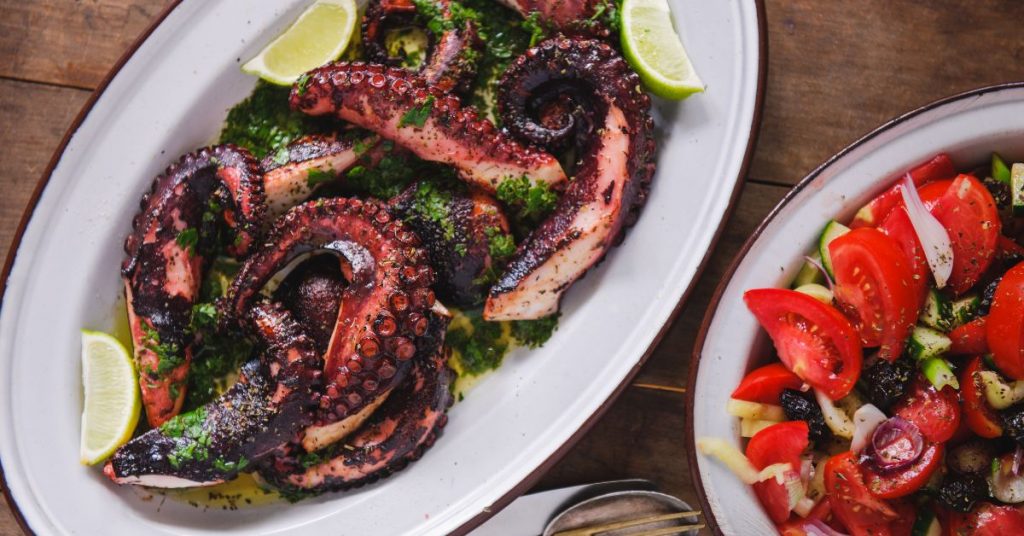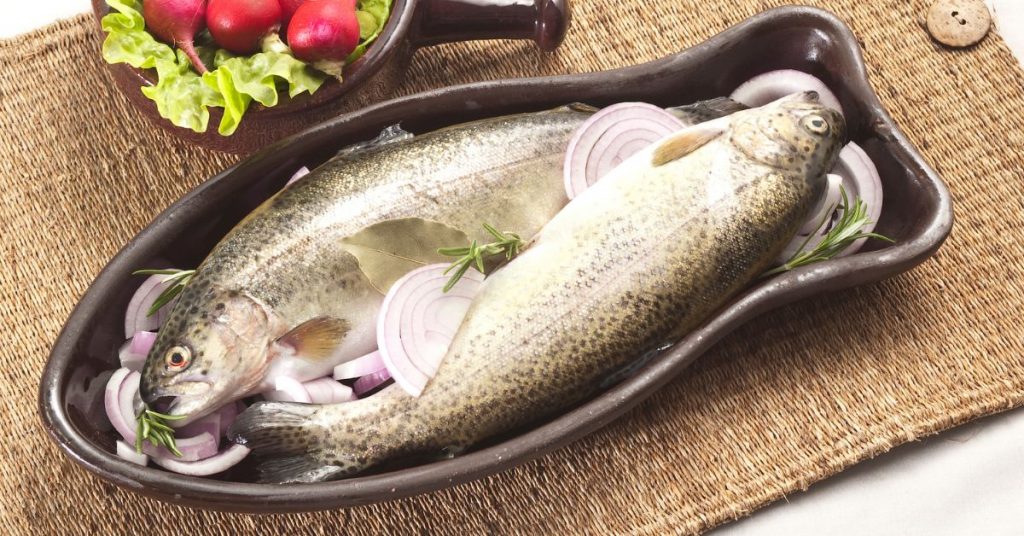11 High Protein Fish and Seafood (Recipe Ideas Included)

It is a well-known fact that fish and seafood are very beneficial for human health. In addition to the micronutrients and omega-3 fatty acids, they are also a rich lean protein source, making them an excellent solution for a healthy diet. So what fish and seafood are high in protein?
Tuna, halibut, shrimp, octopus, anchovies, sardine, crab, lobster, trout, grouper, and salmon are exceptionally rich sources of lean protein. In addition to being packed with omega-3 fatty acids, they are an abundant source of other immensely beneficial nutrients and offer many cooking options.
Often, when we think of seafood or fish, we think of that recognizable fishy smell, and even though we know how beneficial they are, somehow, we avoid them. Fish and seafood preparation could be tricky, but it is worth it, as seafood and fish are an excellent lean protein source. Therefore, in the following text, I will explain what fish and seafood are high in lean protein and give you some ideas on preparing them.
What Fish and Seafood Has the Most Protein?
All types of fish and seafood are generally rich in lean protein, which is the type of protein you need. Lean proteins are proteins free of saturated fats. They are very good for muscle and bone health and are highly satiating.
Tuna – 30 g
Tuna is an incredible source of protein, with approximately 30 g of protein per 100 grams of meat. [1] The protein amount varies from about 5 g depending on whether the tuna is fresh or canned. Canned tuna has less protein, about 19 grams.
In addition to being packed with protein, tuna also contains potassium and iron, which are very beneficial. Still, it also contains a lot of mercury, so you shouldn’t go overboard.
However, overeating on tuna is very unlikely, as it is highly satiating, so you won’t be able to have more than one tuna can, if that, anyway.
In terms of recipes and cooking options, fresh tuna is very complicated to prepare and sear. The searing process starts with the pealing and scarring, and, frankly, I don’t recommend going through all that trouble, especially with canned tuna being so delicious and available.
Whether canned or fresh, tuna goes excellent in a salad, as spaghetti sauce, or as a pizza topping. It is an excellent pair for cooked vegetables, such as broccoli, carrots, potatoes, and cauliflower. However, if you’re feeling lazy, just squeeze a few lemon drops on it, sprinkle some parsley and garlic, and you are good to go.
Regarding popularity, canned tuna takes the cake, as it is available everywhere.
Halibut – 19 g
Halibut made its way to this list with the whooping 19 g of lean protein per 100 g of meat. [2] Halibut is known for its exceptionally high amount of omega-3 fatty acids. It’s known as an incredibly healthy fish, perfectly balancing fat and protein.
It is a very popular fish worldwide, especially in the US. It is known as a fish that is easy to make and delicious to eat.
Worst case scenario, halibut doesn’t require more than just frying it, so it’s a great choice if you are new to cooking. The pairing options are countless; fries, green salad, cooked vegetables, or potato salad are more than compatible with halibut.
In addition to frying it, you can also bake it with mixed vegetables, sprinkle some lemon juice and cover it with tin foil. The results will amaze you.
Halibut is an excellent choice if you are on a health kick or like eating healthy. It is also great if you are looking to lose a few pounds but aren’t willing to give up the pleasures of food.
Shrimp – 24 g
Shrimp is the very definition of small but mighty, with 24 g of protein per 100 grams of shrimp. Abundant in omega-3 fatty acids, phosphorus, potassium, magnesium, and sodium, these tiny treasures are incredibly healthy. [3]
They are also an excellent addition to any seafood cocktail but can serve you well on their own too. Dipped in a sauce of your choosing, you don’t need a black tie to enjoy them. All they need is just a sizzle, and they are ready to go.
Moreover, the fishy smell many types of seafood and fish have is absent in shrimp, making them all the more attractive and incredibly popular.
As fancy as they sound, they are very available and highly affordable, making them known and beloved worldwide.
Octopus – 29.6 g
With its 29.6 g of protein per serving, octopus is one of the protein richest marine animals. [4] In addition to this incredibly high amount of protein, the octopus is also abundant in calcium, magnesium, and potassium.
As distasteful as it may seem, the octopus is incredibly delicious and rich-tasting. It is naturally very low in fat, but most of the recipes include deep-frying, which as a meal, makes the octopus a fatty dish.
However, deep-frying isn’t the only option, as steamed octopus is also a delicacy and grilled. Steamed and grilled octopus retain their nutritional value and remain low in fat.
The pairing options are abundant. Starting from fresh green salad, to fried vegetables, to steamed and grilled. It goes excellently with grilled eggplant and zucchini with garlic and parsley, french fries, potato salad, or simmered mixed vegetables.
However, the downside is that the octopus isn’t as available as other seafood and is a bit pricy. Still, it has managed to remain popular worldwide.

Anchovies – 28.9 g
Another canned fish on this list deserved its place among the protein titans with 28.9 g of protein per 100 grams of meat. [5] In addition to being packed with protein, anchovies are also high in sodium and omega-3 fatty acids.
If you can look past the strong fishy smell, you will really appreciate how tasty they are. They go as pizza toppings and sauce additions, or you can just have them plain out of the can; you won’t regret it.
They are an excellent diet addition if you’re on a budget and a cost-effective way to look after your health.
Sardine – 24.6 g
Sardines fall into the top three species that are richest in omega-3 fatty acids and combined with the 24.6 g of protein per 100 grams of meat, they have well deserved the name “superfood.” [6]
They come fresh as well as canned and offer many cooking options. Unlike the fresh tuna we discussed above, fresh sardine is pretty easy to cook.
The trick is to season it before cooking, as that’s the best way to give it flavor. Whereas for other types of fish, pre-seasoning is desirable but optional. It is mandatory when it comes to sardines.
The other parts are much like other fish. You can fry, grill, or bake the sardine filets and combine them with the standard fish pairing foods- potatoes, carrots, eggplant, zucchini, leafy greens, fresh salads, broccoli, cauliflower, or anything else you’d like.
You can also have your sardine filets plain, with just a tad of olive oil, a few pieces of garlic, and parsley.
Canned tuna offers fewer pairing possibilities, as it has a very distinctive and intense flavor and aroma. It goes great as a salad addition or just plain with some onions on the side.
Crab – 19.4 g
Not only that they are high in protein, 19.4 g per 100 grams, but crabs are one of the healthiest types of seafood. [7] Rich in omega-3 fatty acids isn’t everything the crab has to offer. They are also a great source of selenium, zinc, and vitamin B.
They have white and dark meat, both edible, rich, and delicious. The taste of crab resembles that of shrimp and prawn, and maybe the lobster. It is considered a very elegant and rich food and is very appreciated at fancy dinner parties.
The best thing about crabs is that they are steamed, so you enjoy their nutritional elements and the flavor. Crabs go very well with steamed artichoke, garlic and butter, French fries, roasted Brussel sprouts, lemon, garlic, butter sauce, mashed potatoes, or steamed vegetables.
The downside is that the crab isn’t that widely available, and you can find it in stores specializing in fish and seafood, and it won’t be cheap either. However, the crab is still a beloved and popular type of seafood mostly served at restaurants.
Lobster – 19 g
With its 19 g of protein per 100 grams of meat, this crustacean is not only a rich protein source but an abundant source of omega-3 fatty acids, copper, selenium, zinc, phosphorus, vitamin B 12, magnesium, and vitamin E. [8]
It is cooked and paired very similarly to the crab, and it tastes similar, too. It goes with buttery sauces or vegetable mashes that contain butter. Lobster, too, comes steamed, so it retains most of its nutritional value.
Traditionally known as food for the rich, lobster could be pretty expensive, whether you buy it fresh and cook it at home or order it at a restaurant. Funnily enough, lobster and oysters were once considered the food of the working class, which isn’t the case today.
However, as a delicious type of seafood, it is loved by many and famous around the globe.
Trout – 20 g
Rich in protein, with 20 g per 100 grams of meat, the trout is also a very rich source of vitamins such as B 3, B 6, B 5, and B 12, as well as minerals such as potassium, selenium, phosphorus, and niacin. [9] Given that it’s a predatory fish, the amount of mercury in the trout is surprisingly low, which isn’t the case for fish near the top of the marine food chain.
Considering that the trout’s natural habitat is the waters of the US, Europe, and Asia, it is extremely available, as you can go and fish it out of your local lake. It is also available and affordable to buy fresh or frozen.
It is very delicious and even more versatile in terms of cooking. You can have it fried, baked, grilled, or steamed with any seasonal vegetable available at a particular time of the year.

Grouper – 25 g
Incredibly delicious, the grouper has a protein content of 25 g of protein per 100 grams. [10] In addition to its high protein amount also contains potassium, selenium, vitamin B 12, vitamin B 6, and phosphorus.
However, the grouper has a very high mercury amount, and having it more than twice a week isn’t recommended. Otherwise, it is a great choice to introduce into your diet.
In terms of cooking, you can cook it like any other fish- baked, grilled, or fried, with standard additions and sides, but because the fish is mild and soft, you can pair it with buttery sauces to match the taste or stronger spices and sides to counter it.
The grouper is a very popular fish, primarily because it is easy to make and goes with various sides. It is also available and affordable.
Salmon – 20.4 g
Salmon has a protein of amount of 20.4 gr per 100 grams of meat. [11] Athletes love it because it’s low-fat, high-protein, and easy to prepare. In addition to the high protein amount, salmon contains vitamins A and D and calcium.
In terms of preparation, as I already mentioned, the salmon is very easy to make, and it goes with a wide range of sides. Baked, grilled, fried, or raw the salmon would indulge your taste buds.
Another upside is that it is available and affordable worldwide, fresh and frozen.
Is Fish the Best Source of Protein?
To say which would be the best source of protein is a bit tricky, as there are many rich protein sources, fish among them. And still, when we say fish, that is a wide term, as there are countless types of fish varying in protein content.
Fish, in general, falls in the category of best protein sources, and it goes hand in hand with other protein sources. Therefore, it would be better to describe fish as one of the best protein sources rather than the best one.
Is Fish Better Than Chicken?
Both fish and chicken have advantages and disadvantages. Chicken is more available and cheaper than fish, easier to prepare, and it doesn’t smell like fish, so many people find it a better option.
The protein amount of the chicken is nearly the same as that of fish and is also low in fat. However, nutrition-wise, fish is seen as slightly better than chicken, primarily because of the omega-3 fatty acids and micronutrients it contains.
Which Thing Has the Highest Protein?
It is said that beef is the highest in protein. However, the amount of protein in lean beef is 22 grams in 85 grams of meat, meaning that there are types of fish with higher protein amounts.
Therefore it would be inaccurate to classify this as the protein richest food. We can discuss food groups, but to separate one food as the best protein source is debatable.
